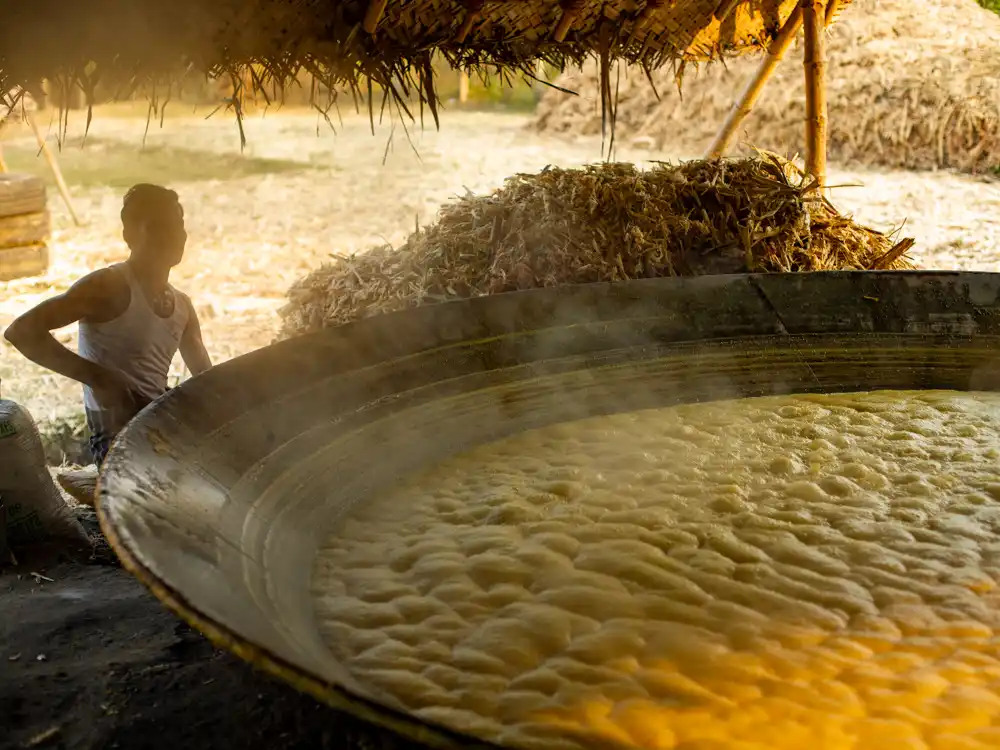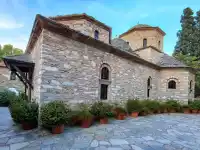Through villages that don’t appear on maps, on roads where horns sound more than brakes, and among people who have little — yet always offer something. This journey wasn’t about landmarks. It was about confrontation. With time, with silence, with oneself. Indian Countryside: Journey Through Southern India.
We drive along rural roads where you don’t stop for traffic jams, but for cows napping in the middle of the street. But we’ve gotten used to that. Just like we’ve gotten used to why every driver buys a floral rosary to hang from the rearview mirror — it protects him. We’ve hitchhiked with nomads, ridden tuktuks with locals, and squeezed into Maruti Suzukis with ten others. Yet the real surprises wait each time we stop.
Street Barbershop
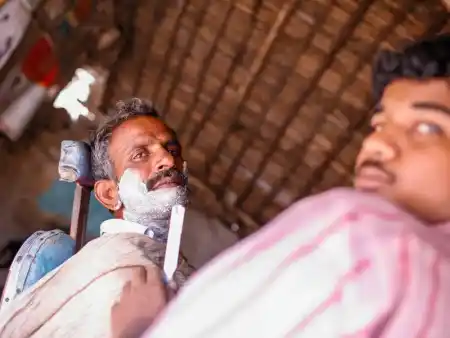
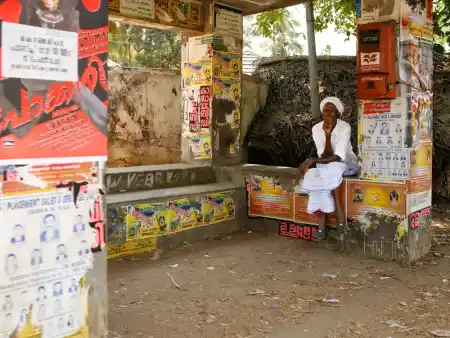
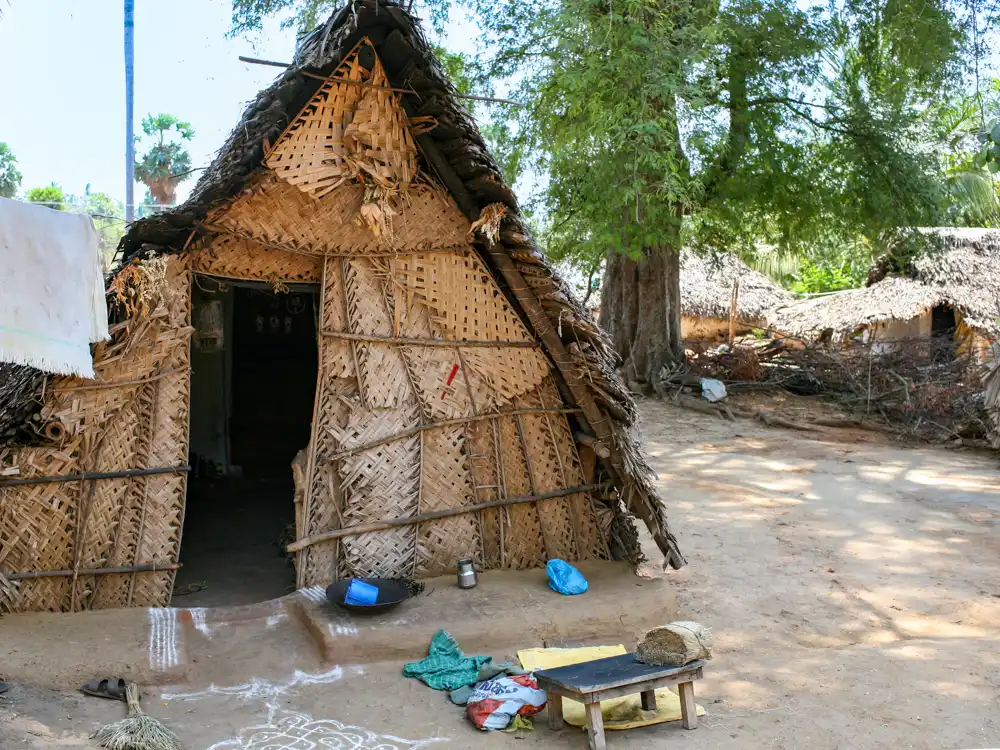
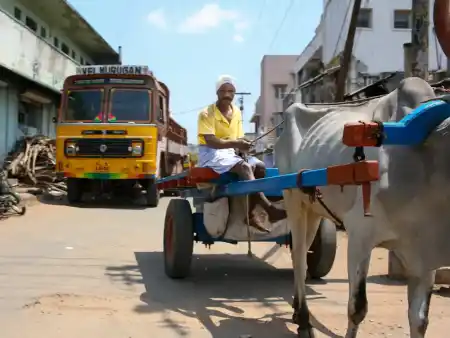
In a larger village, we pass bullock carts and weave through rickshaws, old bicycles, and screeching motorcycles barely holding together. We stop at a barbershop. Beneath a straw canopy, on the side of the road: a chair, a mirror hung on a tree, and a barber with a straight razor. His customer sits surrounded by dust and blaring trucks — and yet, the moment feels intimate and dignified.
Field Cinema
In village alleys, you find all sorts of things. At night, a sheet is stretched between two trees, someone brings a generator, and Indian songs play through speakers. Children sit in the dirt. Someone sells peanuts, someone offers tea in a plastic cup. Bollywood glows. The movie doesn’t matter. It’s not about the film — it’s about being together. And you, a white foreigner, sit among them. No subtitles. But you understand everything.
Frog Weddings
Weddings in India aren’t just for family. If you pass by, there’s a good chance someone will invite you in — even if they’ve never seen you before. You’ll be given a plate, maybe a banana leaf, a smile, maybe a question about where you’re from. And you’ll become part of something you never planned but will remember forever.
We didn’t attend a wedding, but did you know that in some Indian villages, people marry frogs during droughts? A full ceremony, with all the rituals. They believe that once the frogs are wed, the rain gods will be pleased and bless the land. Like our springtime effigies — part ritual, part hope, deeply tied to nature and belief.
Cooking Sugarcane
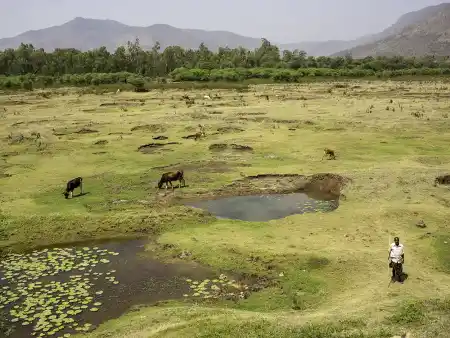
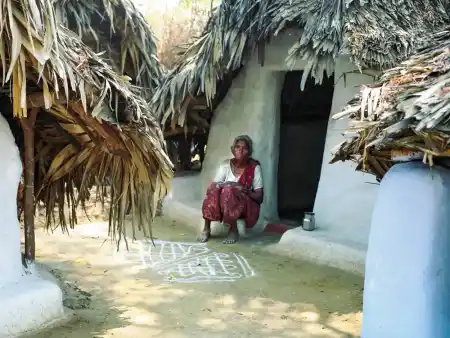
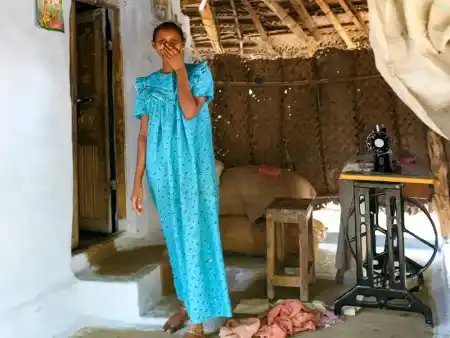
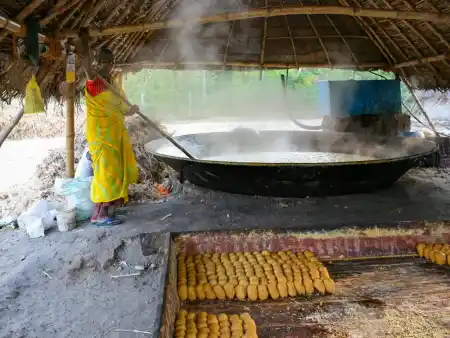
From afar we spotted smoke rising from behind thatched huts. After a nod, we entered the village. It felt like stepping into another time. Not slower, just less hurried. An old woman stared at us from her doorway and said something. I didn’t understand a word. She kept talking. Eventually we both laughed, nodded, and somehow understood each other. Because smiles, curiosity, and respect — those are universal languages.
In most huts, you’ll find a tiny textile setup — either a sewing machine or loom. Division of labor is near perfect. The glances from locals carry a quiet curiosity. Their gaze reads you. Even when they don’t speak, they watch in a way that says: “We see you, we allow you space.” And that’s more than words.
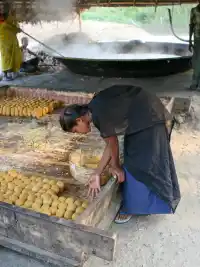
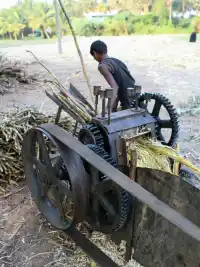
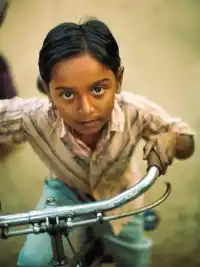
Deeper in the village, sugarcane is being processed. Children and women carry fresh stalks. There’s no pretending about child labor here. Fathers and sons chop and grind. Mothers stir syrup. A girl shapes sweets from thickened molasses. Everyone helps. We offered to join in, but the head of the household politely, firmly declined. They tolerate us, but it’s clear — we don’t belong here.
The Eyes of the People
Later, reviewing portraits I had taken, I noticed something rare: a mixture of humility, dignity, and poverty. You don’t see this in the slums of Mumbai. There, everyone is out for themselves.
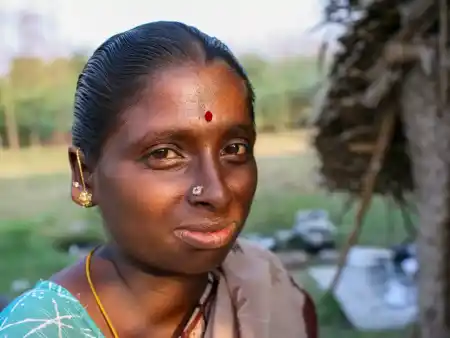
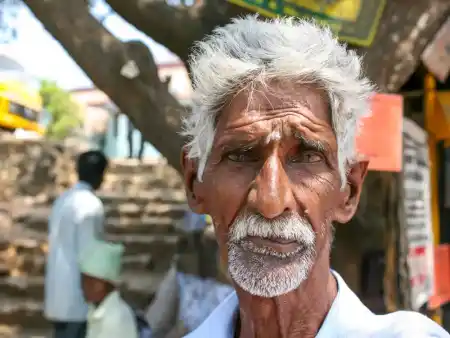

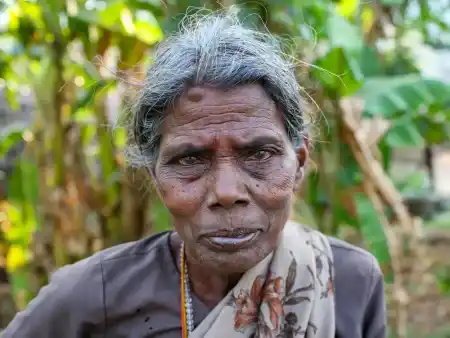
A boy runs over with a tray and chai. We’re used to it by now. A month ago, we would have asked: why is this child working? Where is his school? Is this right?
But locals don’t ask. They live this world, where the harvest takes priority. Sometimes, chai is just chai. Sometimes, it’s a cultural lesson. Or maybe, just a 50-year rewind. I remember my own childhood when old women fetched water from the only village well. It wasn’t so long ago.
Confrontation with Hygiene and Dignity
On the rural Indian Countryside, there are no toilets. Water comes from a pump and doesn’t bother the locals — but if you drink it, you’ll likely be curled up for hours. Meals are eaten by hand. The right hand feeds; the left hand cleans. We use toilet paper; they use water and soap. I honestly don’t know what’s more hygienic. Everyone here follows the same routine — and they do so with a grace we often forget in our sanitized, air-conditioned world.
Rooms are nearly empty. Prayer pictures, a modest cupboard, a sewing machine, a television — and a sense that complaining is not allowed.

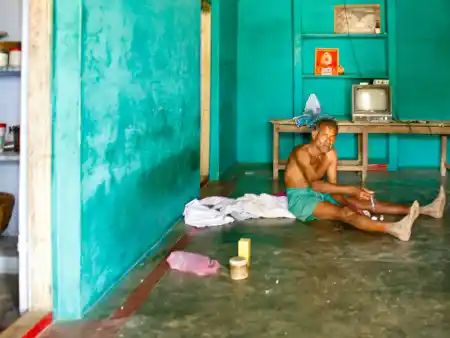
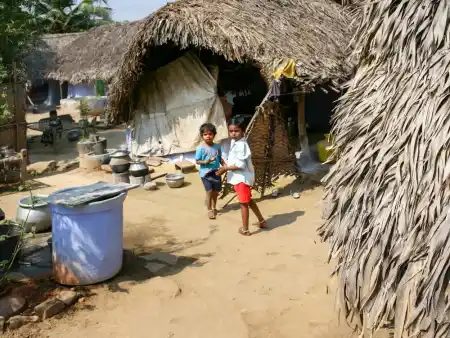
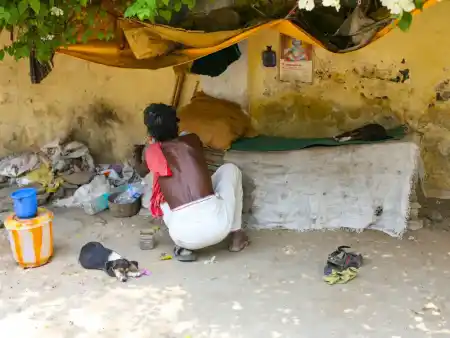
A Teacher Under a Tree
On the roadside, we see a group of children sitting in the dirt. A man with a chalkboard. A school. No building. Children write in the dust or in worn notebooks. Education here is an act of faith, not convenience. And it matters.
Electricity only flows in larger villages. Here, it doesn’t exist. And it’s not needed. Roosters, drums from the nearby ashram, or the crackle of fire under a pot wake you up instead.
To a European, this life may seem strange, unclear, even exotic. But if you sit quietly under a tree, you might sense a kind of soft wisdom we’ve forgotten. In these villages, no one fights time. Life is not about efficiency, but balance.




We come with plans. We leave with questions. Because India in Mumbai is not the same as India here. You won’t understand Indian Countryside in a month. But you might begin to understand yourself.
Where Does Poverty Come From?
There’s no simple answer in the world’s most populous country. Poverty in India isn’t just a condition — it’s a status. A separate world. And it can’t be understood through hotel windows or guidebooks. It’s not just one wrong decision. It’s the result of history, systems, and neglect.
India was a British colony for almost two centuries. The British didn’t build — they extracted. Education, land ownership, infrastructure — all designed for empire, not Indians. When they left, they didn’t hand over a country ready to grow. They left it broken, dependent, divided. Have you seen movie Gándhí?
But it’s not just colonialism. India has its own shadows. The caste system, officially abolished but still present. Corruption, bureaucracy. And the silent acceptance that some will have everything, others nothing.
You see that silence in people’s eyes. It’s not despair. It’s endurance.
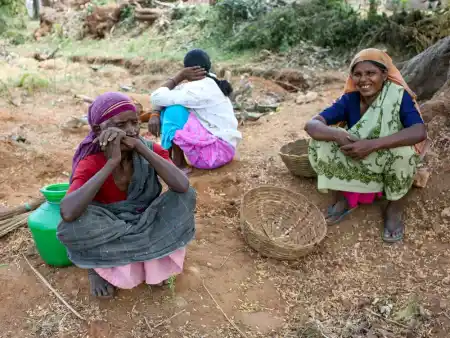
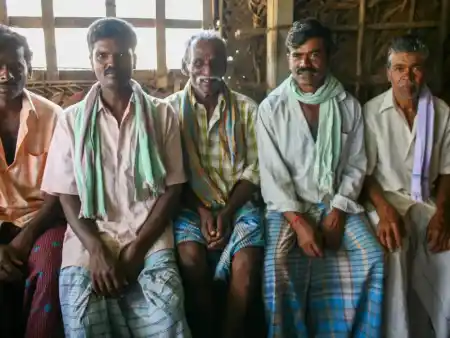

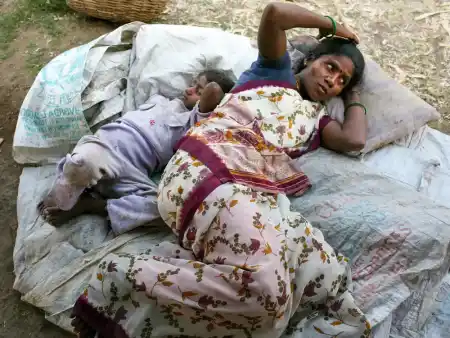
The Comfort Paradox
Life in southern India isn’t tourist folklore. It’s authentic. It’s the fabric of identity. South India won’t offer you comfort. It offers you truth. In the dust, in the rice, in the gaze that demands nothing.
Poverty here is not just about money. It’s about lack of choice. If you’re born in a slum, your chance to escape isn’t just low — it doesn’t exist without outside help.
Rajesh, my guide, says: “Without someone reaching out, the average Indian is lost.”
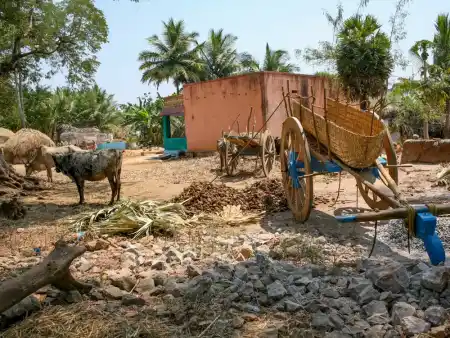
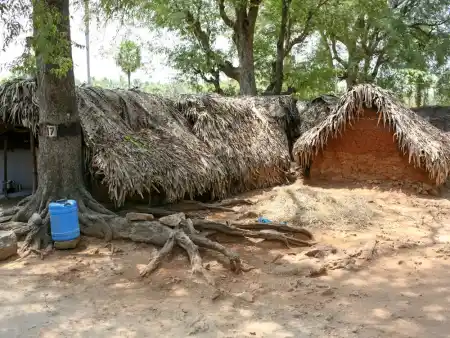
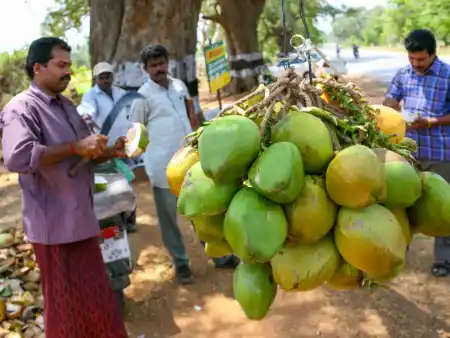
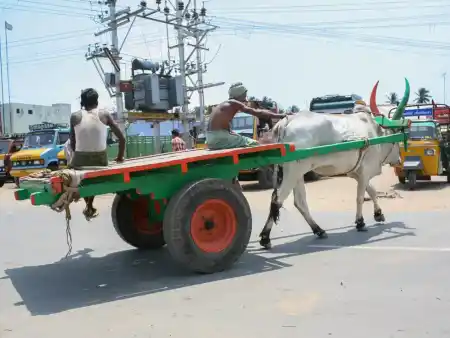
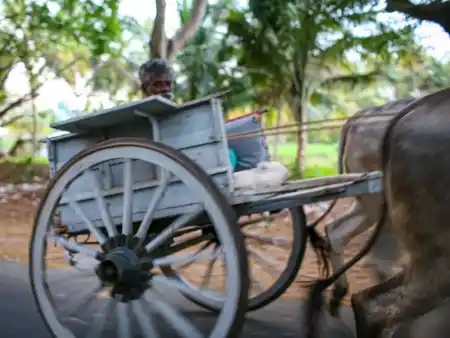
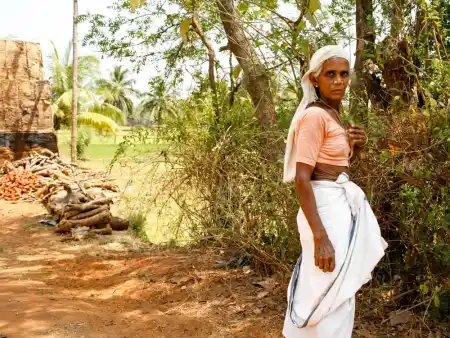
And yet — those with the least often live the most. They smile, work and share. Not because life is easy, but because they can’t afford the luxury of discontent.
One sentence echoes in my head: “Happiness and smile is all we have. We won’t let it be taken.”
And maybe that’s the ultimate irony. In a land where millions live without water, Wi-Fi, or any promise of tomorrow, you may find more humanity than in places where we have everything.
But in India, it’s not polite for a tourist to ask these questions.
So you carry them with you. In your camera bag. And they won’t bother you at first. But they come later — while editing photos, sitting at home. You won’t answer them. You’ll just feel them. And that feeling might pull you back. To southern India, where country doesn’t promise comfort.
But offers something real.
From the Letters from India, photo: Petere Ertl restartnisa

